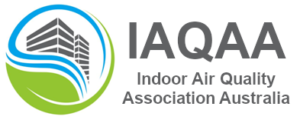Dr Nick Agnew
Dr Nick Agnew is a Chartered Mechanical and Fire Engineer, with specialist applied fluid dynamics expertise. He is currently Director of Stacey Agnew Pty Ltd, an engineering consultancy which he has operated with co-founder Conrad Stacey for 13 years. Nick has 25 years of professional experience covering industrial and underground fire life safety, industrial and underground ventilation, new product development, forensic engineering, accident investigation and reconstruction, Computational Fluid Dynamics (CFD), computational stress analysis, and machinery design.
A major portion of Nick’s work over the last 15 years has involved Fire Life Safety in underground infrastructure and Tunnel Ventilation. During his career, Nick has extensively employed CFD. He is well-regarded as a seasoned CFD practitioner.
Highlights of Nick’s career to date include modelling of fire and airborne contaminants for the new World Trade Center Transportation Hub in New York, and the forensic investigation of the fatal Childers Backpackers Hostel fire. Nick is currently the lead tunnel ventilation and fire engineer for the $6 billion Cross River Rail project in Brisbane.
Through this session, Nick will help us understand the role that CFD modelling can play in identifying potential routes of migration of airborne particulate and gaseous contaminants, and in informing us where we should be placing our monitors when conducting sampling or real-time monitoring for indoor air quality in our built spaces.
Dr Laurie Glossop
Laurie Glossop is a Certified Occupational Hygienist with the Australian Institute of Occupational Hygienists and has been in occupational hygiene (industrial hygiene for Americans) for 40 years (he is old!). He has a strong background in the physical sciences and a PhD in chemistry. Laurie has also assessed many buildings for ventilation, air quality and impact on performance of people (re carbon dioxide levels, air movement and VOCs).
In terms of prevention of infectious disease spread, Laurie was contracted by the Western Australian Health Department to assess airborne transmission of SARS-Cov-2 in COVID Quarantine Hotels run by the Department. This work identified that COVID was being spread by airborne transmission within some of these hotels when many health experts believed this could not happen. Subsequently he has assessed COVID in relation to ambulances, ambulance call centres, very large tertiary hospitals, multiple prisons and large mining corporations including those operating remote control operations where there is a high density of people. Some of these facilities had indoor environments with poor ventilation and high density of people which has made them high risk of airborne transmission of COVID.
For the last 25 years Laurie has run his own consultancy after initially being an occupational health regulator with the Western Australian Government. Over the years he has assessed virtually every occupational health hazard, but is most recognised for his work relating to fibrous minerals (including asbestos) and respirable crystalline silica. He has written Codes of Practice for asbestos at the national level and performed a major review of respirable crystalline silica for Safe Work Australia which has recently been published.
Several years ago Laurie was granted the highest Award from the AIOH – the Pam de Silva Medal which recognises AIOH Members that have demonstrated their commitment to the principles of leadership and scientific integrity in the field of occupational hygiene.
